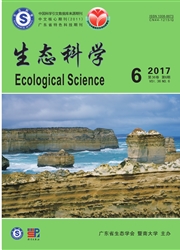

 中文摘要:
中文摘要:
广东南澳岛近海是我国龙须菜养殖的重要基地。为了探究龙须菜养殖对藻华防治的贡献,分别于2016年3月、5月和6月在广东南澳岛北部海域不同养殖功能海区进行采样,研究龙须菜养殖前后海水中营养盐含量和结构的变化,分析不同粒径的浮游生物对有机营养盐的水解利用,探讨龙须菜养殖对浮游植物竞争利用营养盐和生长产生的影响。结果表明,研究海区水质较清洁,无机氮磷含量较低,春季至夏季,随着龙须菜和浮游植物生物量增加,溶解无机磷(dissolved inorganic phosphorus,DIP)浓度不断下降,至6月南澳海区成为磷限制海域。在5月龙须菜生长高峰期,龙须菜养殖区和龙须菜鲍鱼混养区的DIP浓度显著低于鲍鱼区和非养殖区,龙须菜养殖区的叶绿素a浓度明显低于其他区域,亮氨酸氨肽酶(leucine amino peptide,LAP)和碱性磷酸酶(alkaline phosphatase,AP)活性显著升高,表明龙须菜养殖区浮游植物受到较为明显的营养胁迫。而龙须菜收割后,该养殖区的叶绿素a含量则显著上升,甚至高于其他区域。该结果表明在南澳岛海域,龙须菜养殖通过营养竞争关系(尤其是磷)抑制浮游植物的生长,大规模龙须菜养殖可能有助于抑制有害藻华的发生。
 英文摘要:
英文摘要:
The coastal area of Nan'ao Island, Guangdong, is one of the most important cultural base of Gracilaria lemaneiformis in China. To explore the possible effect of culture of G. lemaneiformis on algal blooms, field investigations were conducted at different functional cultural zones in this area in March, May and June, 2016. The changes in nutrient contents and compositions were compared before and after the cultivation of G. lemaneiformis and the utilization of organic nutrients by phytoplankton in different-sized fractions were determined through analysis of extracellular enzyme hydrolysis. Results show that the concentration of dissolved inorganic nutrient was low, thus the water quality of the studied area was good. The concentration of dissolved inorganic phosphorus(DIP) decreased with the increase of the phytoplankton biomass from spring to summer, which in turn changed the studied area into a phosphorus-limited area finally. In May, the DIP concentrations in G. lemaneiformis mono-culture zone and G. lemaneiformis abalone co-culture zones were significantly lower than that in abalone mono-culture and non-culture zone. Furthermore, compared with any of the other zones, the chlorophyll a(chl a) concentration was significantly lower whereas the activities of leucine amino peptidase(LAP) and alkaline phosphatase(AP) were much higher in the G. lemaneiformis mono-culture zone, suggesting that the phytoplankton in this zone suffered from much more nutrient stress. Moreever, chl a content in G. lemaneiformis mono-culture zone increased rapidly after the harvest of G. lemaneiformis. All these results indicate that G. lemaneiformis might inhibit phytoplankton growth by nutrient competition, especially in phosphorus, and thus may depress harmful algal blooms from happening.
 同期刊论文项目
同期刊论文项目
 同项目期刊论文
同项目期刊论文
 The effect of riverine dissolved organic matter and other nitrogen forms on the growth and physiolog
The effect of riverine dissolved organic matter and other nitrogen forms on the growth and physiolog 期刊信息
期刊信息
